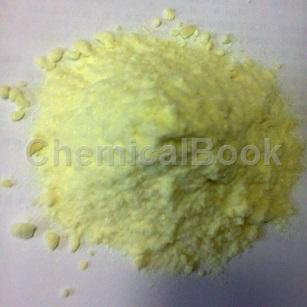Background and overview[1][2]
Bis(triphenylphosphine)palladium chloride: [(C6H5)3P]2PdCl2 is widely used as a catalyst in the fields of organic chemicals, pharmaceutical chemicals and liquid crystal material synthesis. At present, its main synthesis methods are: 1) direct synthesis of palladium chloride and triphenylphosphine, 2) reaction method of palladium chloride (K, Na, Li salt) and triphenylphosphine, 3) palladium chloride and triphenylphosphine Acetonitrile (benzonitrile) complex and triphenylphosphine ligand exchange method.
Method 1 takes a long time and requires 72 hours of reaction, and the yield is not high; Method 2 uses palladium chloride and sodium chloride (potassium chloride or lithium chloride) to react to obtain highly soluble chloropalladate. Bis(triphenylphosphine)palladium chloride is then prepared. Although this method shortens the reaction time and improves the reaction yield, the post-processing is cumbersome and it is easy to introduce K, Na, Li and other miscellaneous ions, resulting in low catalyst quality; method 3 The acetonitrile and benzonitrile used are extremely toxic chemicals, and the reaction time of this method is long and the efficiency is low.

Apply[3]
Di(triphenylphosphine)palladium chloride can be used as a catalyst for organic synthesis, and is often used in suzuki reactions. Carboxylic acids can be decarboxylated to form α- ene.
Preparation[2]
Method 1:
Step one: Dissolve 3.0g (0.017mol) palladium chloride in 10mL hydrochloric acid at 75°C, add ethanol to dilute to 30mL; the concentration of hydrochloric acid is 12N, and the purity of ethanol is 95%;
Second step: Dissolve 9.0g triphenylphosphine in 100mL absolute ethanol solution, heat to 60°C to dissolve;
The third step: under rapid stirring, add the palladium chloride acid solution prepared in the first step dropwise into the triphenylphosphine ethanol solution prepared in the second step; incubate the reaction at 55°C for 20 minutes; cool and filter. Wash three times with 50% ethanol aqueous solution, drain, and vacuum dry to obtain 11.84 g of product, with a yield of 100%. The vacuum drying temperature is 50°C, the vacuum degree is 0.05MPa, and the drying time is 7.5h. Finally, bis(triphenylphosphine)palladium chloride is obtained.
Method 2:
Dissolve 3g (0.017mol) PdCl2 in 10mL concentrated hydrochloric acid on a hot water bath, dilute it to 50mL with distilled water, and adjust the pH value to 5 with 5% KOH aqueous solution (a wide range of pH test paper from 0 to 14 does not change color) at room temperature ( 15~30C) slowly add 100mL of anhydrous ethanol hot solution of 10g (0.0382mol) PPh3 with stirring, stir for 10min, place in a hot water bath of about 90C and let stand for 1h, filter, wash twice with distilled water, and dry to obtain a yellow solid Bis(triphenylphosphine)palladium chloride 11.4g. This yellow solid can be directly used for decarboxylation of carboxylic acid to prepare a-ene.
Main reference materials
[1] Li Quan, Zhu Hongyou, & Liu Fuchu. (2003). Preparation of bistriphenylphosphine palladium dichloride as catalyst for decarboxylation of carboxylic acid terminal olefins. Organic Chemistry, 23(z1), 000354-354.
[2] Liu Guihua, Ye Qingsong, Pan Zaifu, Yu Juan, Shen Shanwen, & Liu Weiping. (2013). Synthesis and structural characterization of trans-bis(triphenylphosphine)dichloropalladium(Ⅱ). Yunnan Chemical Industry, 40(2), 5-7.
[3] Liu Guihua, Ye Qingsong, Zuo Chuan, Yu Juan, Yang Jun, & Jiang Jing et al. (2014). Synthesis, structure and catalytic activity evaluation of tetrakis(triphenylphosphine)palladium. Noble Metals (1 ), 59-62.

 微信扫一扫打赏
微信扫一扫打赏

